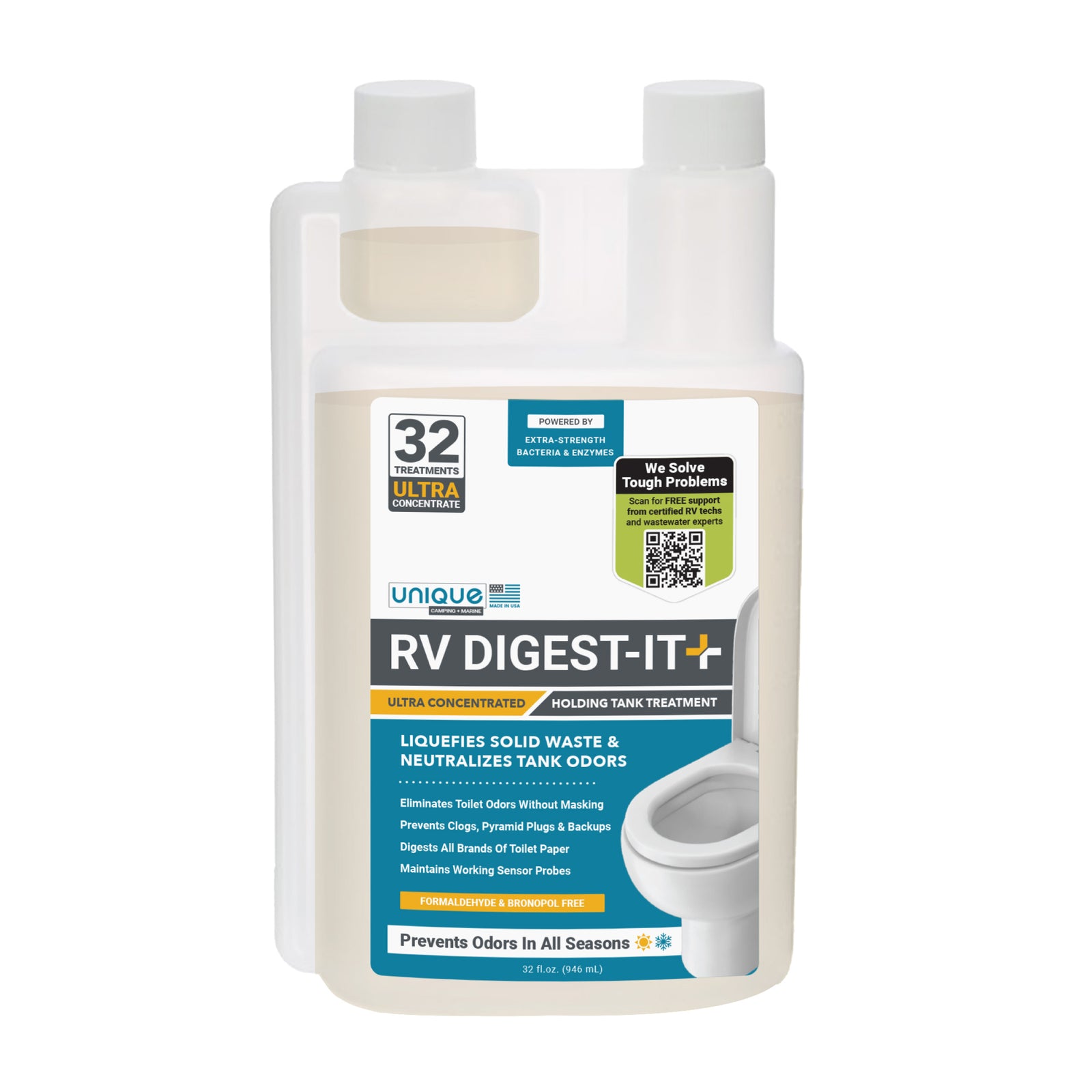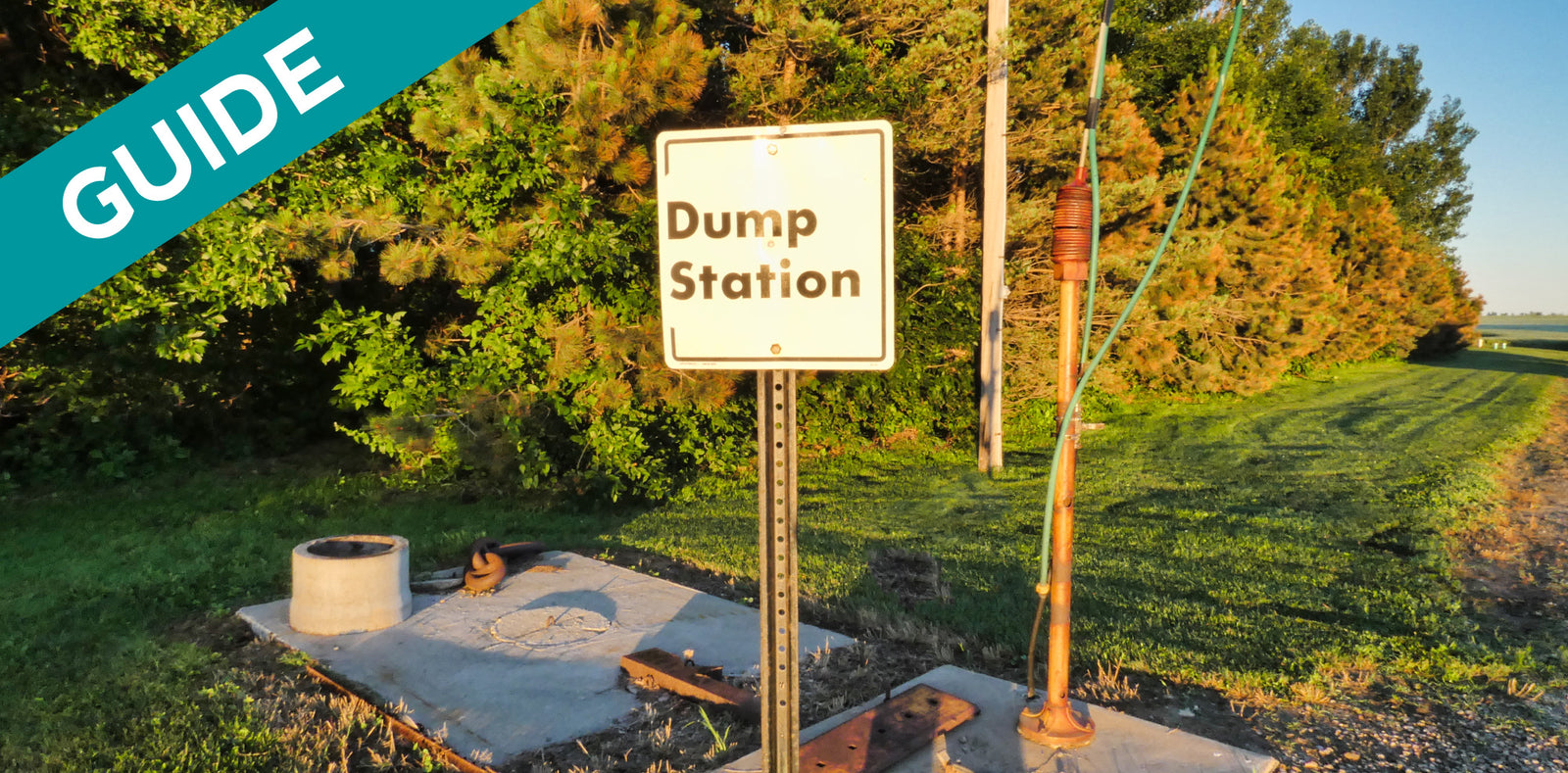
Key Points:
- Dump your holding tanks every 3-5 days or when they reach two-thirds to three-quarters full.
- Frequent dumping prevents waste buildup, clogs, odors, and sensor misreads.
- Rinsing after every dump (when possible) keeps tanks trouble-free.
Dumping can feel like a chore, and with the increasing cost of going to the nearest dump station (sometimes upwards of $20 for the privilege to discard your excrement), it can make dumping often seem unnecessary. But in order to maintain your holding tanks properly, they must be emptied regularly to avoid frustrating issues like clogs, odors and misreading sensors. In this article, we will explain how frequently you should be dumping your RV holding tanks, how to know when you should dump, and why consistent dumping is so important.
How Often Should You Dump?
The frequency depends on tank size, water usage, and the number of users. RV Black tanks range from 4 to 150 gallons, with a 40-gallon tank lasting about 10 days for two people. Best practice: dump when tanks are two-thirds or three-quarters full to avoid overflows, vent blockages, and odors.
Overfilling can cause the vent to clog with waste, leading to toilet burping, odors, and a messy situation. A general rule: expect to dump every 3-5 days based on tank size and usage.
For boondockers with small tanks, portable sewer totes can extend time between dumps. Using a macerator pump helps transfer black tank waste into a tote in a truck bed, making transport easier.
If you're on full hook-ups, keep your black tank valve closed until dumping to prevent odors and clogs. Even when connected to a sewer, let your tanks reach at least half full before dumping to ensure efficient emptying. Rinse tanks after every dump when possible.
Why Dumping Regularly Matters
Preventing Clogs and Odors
Using too little water can lead to clogs and smells. The more waste in the tank, the higher the risk of odor issues. Dumping every 3-5 days removes waste before buildup becomes a problem.
Reducing Waste Residue
Even with a high-quality bacteria and enzyme tank treatment (like Unique RV Digest-It Ultra), waste residue accumulates over time. Regular dumping and rinsing prevent excessive buildup on tank walls, floors, and sensors.
Preventing Misreading Sensors
Grease, oils, and waste can coat sensor probes, causing inaccurate readings. Dumping every 3-5 days or when tanks are two-thirds full helps maintain accurate sensor function.
Managing Odors
A full black tank has more waste volume, increasing odors. While water helps control smells, excessive waste can still create problems. Dumping frequently and using enough water ensures bacteria in treatments like RV Digest-It Ultra stay active, breaking down waste and eliminating odors.
Review
- Dump every 3-5 days or at two-thirds full to prevent issues.
- Frequent dumping reduces clogs, odors, and sensor misreads.
- Always rinse after dumping (when possible) to maintain clean tanks.
With the best practices, you can avoid common tank issues. We have spent the last 30 years helping RVers across the nation solve some of the must frustrating holding tank issues. From clogs and compacted tanks to misreading sensors and odors, and we have compiled everything we have learned into one simple place we. We call it the Unique Method, and we are confident that it can help you too! If you have any other questions, or need help, we have in-house RV service technicians and wastewater experts that will work with you one-on-one to help fix your problem, all at no extra cost. Get help or contact us here!

Prevent Common Problems In Your Tanks!
From misreading sensors, preventing clogs, or eliminating odors, we've got you covered no matter how you camp! All our best holding tank tips and trick information plus more can be found conveniently in one place when you download our FREE Unique Method Field Guide PDF. Achieve holding tank bliss today!
Get The Free Download



